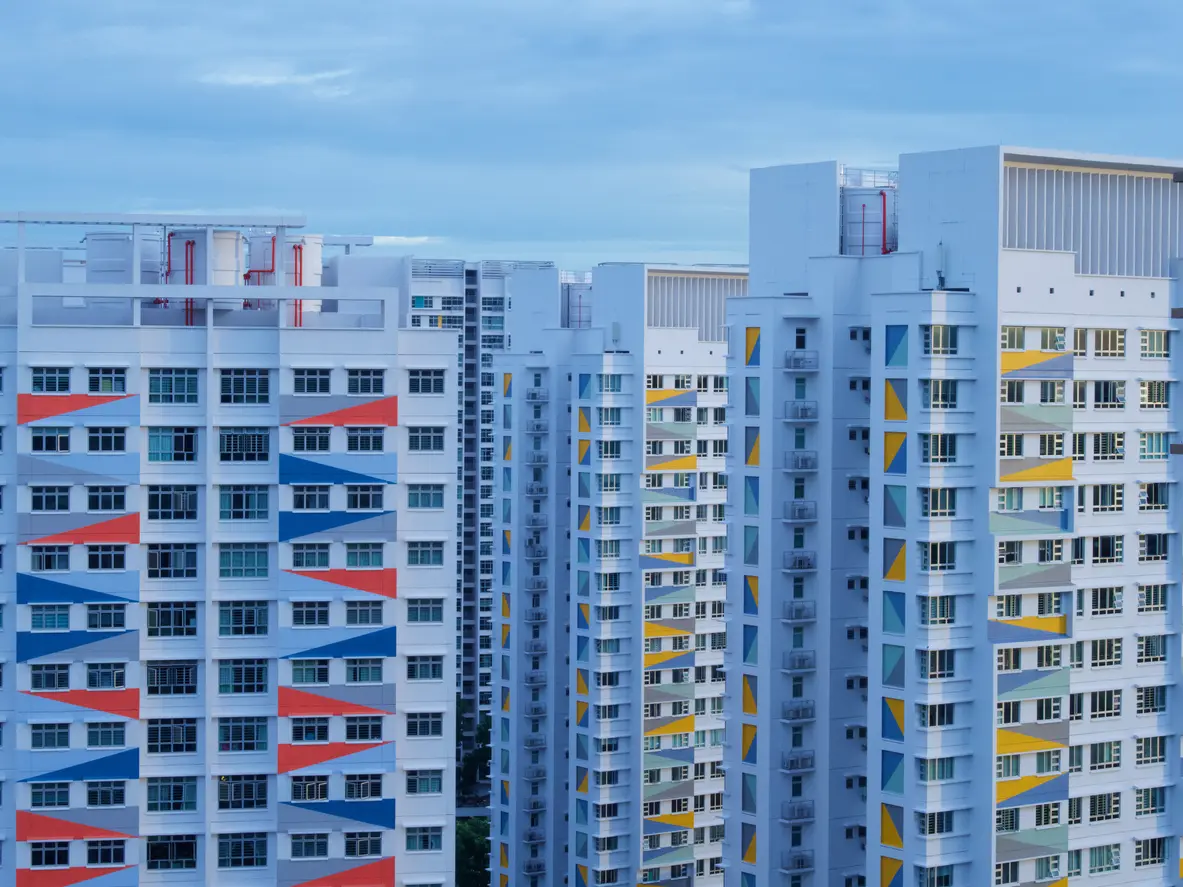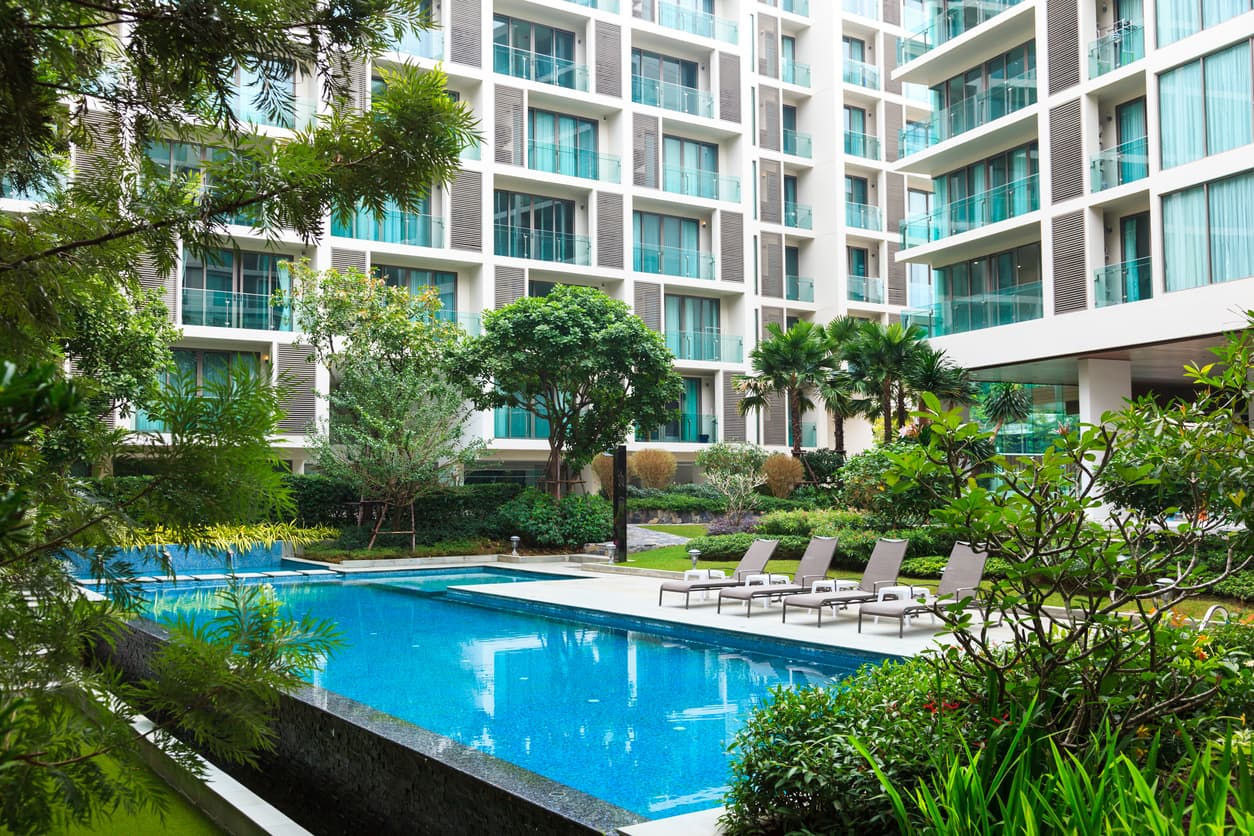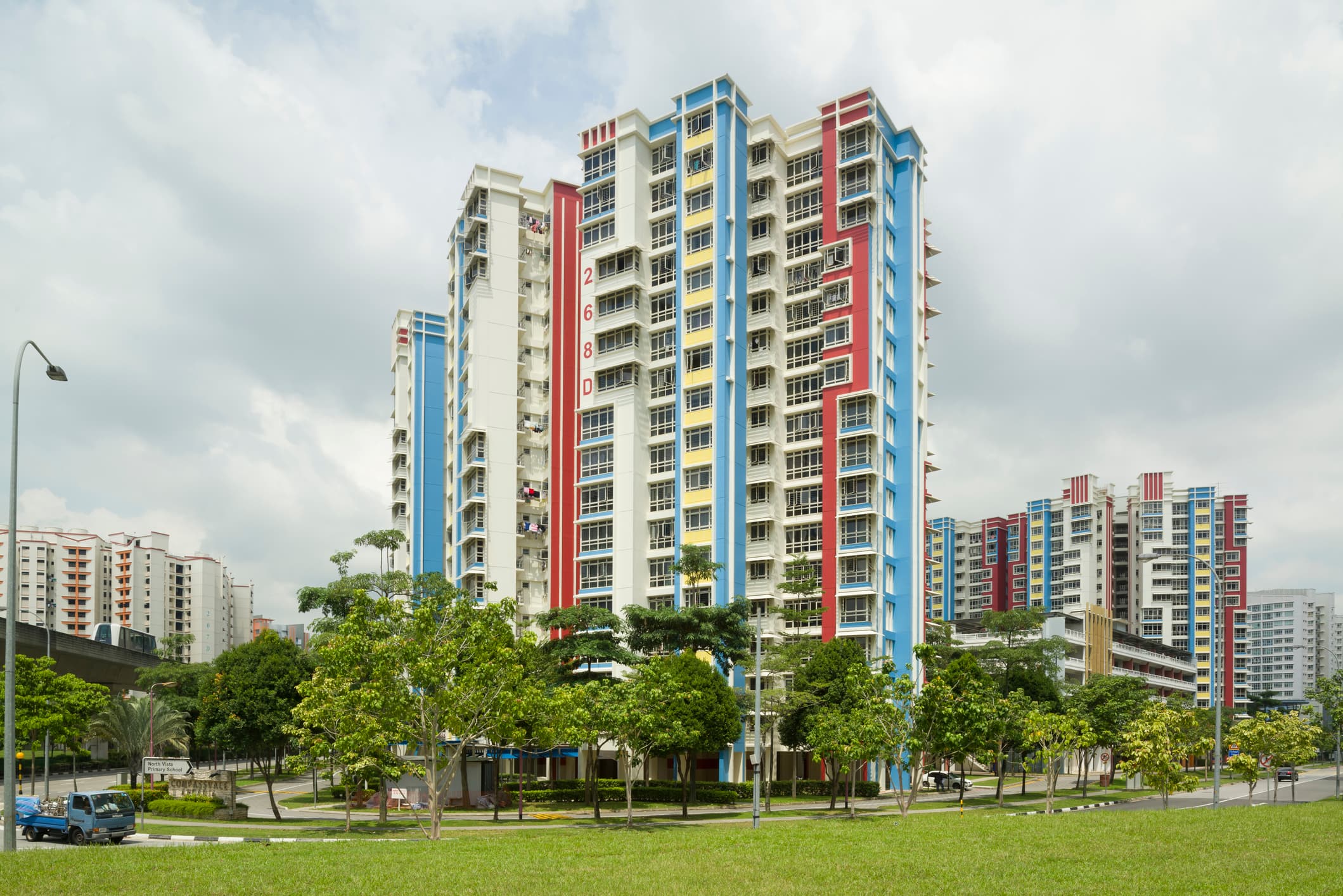The Ultimate Guide to Renting in Singapore (2024)
If you’re a foreigner working in Singapore, or a Singaporean just waiting for your flat to be built, you may need to rent a home. The good news is that Singapore has a wide range of property types, at different price levels; and given the small size of the island, it’s rare to find a place that’s truly inaccessible.
That said, tenants should be aware that Singapore’s rental market designed to be flexible. There is, for example, no fixed Tenancy Agreement (TA) contract that all landlords must use; nor do we have measures like rent control. By understanding the rules, you can take full advantage of this openness. Here’s what you need to know:
How much does it cost to rent a home in Singapore?
The following is based on the past month's recorded transactions by the Urban Redevelopment Authority (URA). You can check this manually by visiting the URA website.
HDB flat rental rates
HDB flat sizes are more “standardised” compared to private properties and you’ll commonly find 3-, 4- and 5-room HDB listings. HDB flats are divided into different HDB towns, and generally the more central and mature the estate, the more expensive the rent will be..
Some older HDB units – those built in the 1990’s or earlier – can be larger. There are also outliers such as two-storey maisonettes and jumbo HDB flats, but these are rare.
Condo rental rates
For condos, we have given the average rental rate on a psf basis, as well as the average monthly rental rate for the district. This is also because, unlike HDB flats, the size and layout of units vary significantly.
Other costs to take note of when renting
Almost all landlords will want a security deposit. The cost to fix any damage to the property, breaking of the lease, etc. will be taken from the security deposit.
Singapore does not have any laws stating the minimum or maximum deposit, but by convention, the deposit is one month of rent per year of lease. If your lease is for six months (the minimum length), then the deposit is usually half a month’s rent. This amount is negotiable, but it’s rare for landlords to depart from this.
Landlords in Singapore are not required to place your security deposit in trust or an escrow account. They will receive the money directly.
Note that when you first give the landlord a Letter of Intent (LOI), you may be asked to make a good faith deposit, or earnest deposit. This deposit is converted to the security deposit, once the Tenancy Agreement (TA) is signed.
It’s also a good idea to have sufficient life insurance to help cover your rent should you be unable to work, especially if you’re the sole breadwinner. This will prevent you (and any loved ones staying with you) from losing your home in a worst case scenario.
What to consider when picking a place to rent
- Budget and plan financially
- Lifestyle requirements
- Living space
- Accessibility
- Facilities and amenities
- Furnished, semi-furnished, or unfurnished
- Length of lease
- The neighbours
1. Budget
Set your rental budget before you start looking for a unit to ensure you don’t make impulsive decisions, and so that you can easily start shortlisting units.
This will also help you decide where and what kind of property you can rent. Say for instance your monthly rental budget is $1,500. For this, you might be able to afford a 540 square-foot condo unit in Tampines, but Bugis might be out of reach.
How much you should budget depends on what you can afford, based on your income and other living expenses. As a general rule, your emergency fund should be able to cover 3 to 6 months’ worth of living expenses (including rent), in case you lose your income. Make sure not to set a rental budget so high that you’re unable to maintain it, should something happen.
2. Lifestyle requirements
Some landlords may not allow pets or smoking within the rental property. These may rule out some rental options for you. Even if your landlord has no pet restrictions, please ensure that your pet is on HDB’s list of approved dog breeds. (Also, cats are not allowed in HDB flats).
If you’re planning to rent a room in a shared flat, especially, check if there are any limitations on the use of the common areas. For instance, are there limitations on the kinds of meat you can cook in the kitchen (eg. no pork/beef), or certain rules on how the fridge or living room is shared? What’s the policy on having guests? Where should toiletries be stored if there’s a shared bathroom?
These allowances or prohibitions should be clearly spelled out in the Tenancy Agreement (TA).
If there will be other tenants sharing the unit with you, you’ll also have to be okay with their pets, smoking, etc.
3. Living space
Decide on the amount of space you’ll need to be comfortable. In general, singles tend to rent units that are around 500 to 600 sq. ft., while families tend to seek units that are at least 1,100 sq. ft.
When working this out, don’t forget to account for personal belongings such as your wardrobe, sports gear, musical instruments, etc.
4. Accessibility
Make sure to find out the following, for any property you view:
- Can you comfortably get to work in time, using your preferred mode of transportation?
- Likewise, can your children get to school on time?
- How far is the unit to the nearest train station or bus stop?
- How far is it to the park, beach, mall, or your favourite hang-outs? Can you walk there, or will you have to drive?
- What is road congestion like during rush hour? Will you be stuck on the road on the way home, or to work?
Properties that are close to MRT stations and malls tend to have higher rental rates, but the convenience may be worth it.
5. Facilities and amenities
For condos, check if the pool, gym, BBQ pit, or other facilities are in good condition. There’s no point paying condo rental rates, if the pool is old and in disrepair.
As for amenities, some key ones to look for are:
- The nearest supermarket or wet market
- Malls and eateries (make sure these are the sort you frequent; there’s no point living near $200-per-dinner Michelin Star restaurants, when you’re on a student budget)
- 24-hour eateries and retail, especially if you work odd hours
- Bank branches and ATMs
- The closest school for your children
- Healthcare facilities, if you need them
- Parks, pubs, cinemas, and your favourite hang-outs
6. Furnished, semi-furnished, or unfurnished
This refers to whether the landlord is providing furniture in the rental unit.
In general, tenants who aim to stay for a short time, such as six months to a year, will find it more convenient to pick a furnished or semi-furnished unit (removes the hassle of buying furniture when you move in, and then selling it again at the end of your lease).
Tenants who intend to stay for longer, such as families settling in for a few years, tend to prefer unfurnished units. This gives you the freedom to create the set-up you need, such as creating a nursery if you’re expecting, or to bring in furniture you may already have.
If the unit is furnished or semi-furnished, you will be given an inventory list of what the landlord is providing for you at the start of your lease. You’ll need to walk through this list with the landlord, to ascertain that the items are indeed provided and make any notes on the state of them (eg. if they’re already damaged in any way). Any new damage to or loss of these items will be subtracted from your security deposit.
As an aside, the chances of damaging something on the inventory list tends to go up with the length of time stayed.
7. Length of lease
The minimum length of lease in Singapore is six months for HDB flats, to a maximum lease of three years. For private properties, the lease must be for at least three consecutive months. There is no daily or weekly leasing allowed.
Some landlords will agree to lower the price, if you sign a longer lease. However, if you’re brand new to Singapore, it may be a good idea to sign only the minimum lease for your very first property. This will give you the chance to switch accommodations, after you get a sense of your surroundings.
8. The neighbours
Neighbours can affect how happy you are in a property. To get a feel of your potential neighbours, visit the property at different times of day, especially at night, to see how noisy it tends to get. If you have the chance to, speak with your potential next door neighbours directly to suss them out. Make sure to also ask about the upstairs and downstairs neighbours, as noise from the units above and below could also be a problem in future.
How to get the best rental rates
To begin with, do your research and check your quoted rental rate against the rents of other properties in a one-kilometre radius. An easy way to do this is to compare similar units on online property search sites.
If you’re planning to stay put in one property for a long time, try negotiating for a cheaper monthly rental in return for signing a longer lease. It is, however, worth noting that, in a weak rental market, a shorter lease might save you money instead – this is because you may be able to re-negotiate the price sooner, when rental rates fall.
Another area in which you can negotiate is your utilities bill. See if your landlord will be able to cover this. One way to convince your landlord to do so is to point out to them that they will be able to claim rental expenses like utilities as a tax deduction, provided tenants don’t reimburse them.
If you have colleagues or friends who are renting, you can also ask them for a referral, as some landlords offer referral benefits. For example, a landlord may be willing to give a better rate to you if you’re referred by an existing tenant of his.
Finally, do consider if you’ll use what you pay for. For example, there’s no point renting a condo if you don’t intend to make use of the condo’s facilities, like the pool or gym. Pay only for what you need.
How to look for rental properties
There are three main ways to do this.
The first is to use property portals like Property Guru, 99.co, Stacked Homes, Oh My Home, and others. These will allow you to browse and filter listings, and contact the agent or landlord.
This is generally the preferred way to search for properties, as most portals have tools such as map views and rental rate comparisons.
The second way is through word-of-mouth referral. As we mentioned above, having your friends or colleagues refer to you their landlords may help you get a better deal on rental costs.
The third method is to use a property agent. The added advantage here is that they’ll do all the paperwork, and will ensure a smooth transaction.
Note that in Singapore, a property agent cannot represent both tenant and landlord; you’ll have your own agent, the landlord will have theirs.
As to their service fee (or commissions), these are negotiable, but this is an idea of how it usually works:
- For rates of at least $3,500 a month and two-years lease, the landlord pays the commissions for both agents. You pay nothing.
- For rates of at least $3,500 a month and a one-year lease, you pay half a month’s rent as commission. The landlord covers the rest.
- For rates below $3,500 a month and a two-year lease, you pay one months’ rent as commission.
- For rates below $3,500 a month and a one-year lease, you pay half a months’ rent as commission.
If you have never rented a property in Singapore before, it’s a good idea to use a property agent for your very first time; just to get a walk through on the process. For subsequent rentals, you can try DIYing.
Steps to renting a home in Singapore
1. View the properties
The property agent or landlord will make arrangements for this.
2. Send the Letter of Intent (LOI) with a good faith deposit, when you settle on the unit you like
Note that the LOI is not the legally binding document. That would be the Tenancy Agreement (TA). Note that the good faith deposit is later the security deposit, as we mentioned above.
It is sometimes possible to skip this step and go straight to signing the TA, if the landlord agrees. If you’re already 100 per cent sure, feel free to push for this.
3. Pay the rental stamp duty.
Note that this is done before you sign the TA. The cost is 0.4% of the total rent for the lease period, if it’s four years or below – so if you rent at $2,500 per month for one year, it’s (0.4% of $30,000) = $120.
On the off chance that you’re renting for more than four years, it’s 0.4% of four times the Average Annual Rent (AAR).
In theory, there’s no stamp duty if the annual rent is below $1,000; but a rate that low is quite rare.
4. Check and sign the Tenancy Agreement (TA).
Always ensure that the terms stated in the LOI match the TA, before you sign.
For example, if you agreed that pets are allowed and this is in the LOI, but it’s not in the TA, then this should be rectified before you sign. Also, while there is no required TA for landlords, this is a contract template you can use. It is drafted by parties experienced in the property rental process, to provide a common standard that is fair to all.
Do familiarise yourself with it beforehand. Note that the common template states the tenant is responsible for servicing the air-conditioner, along with a few points you may want to dispute.
The TA will also specify when and how you pay the landlord, as well as whether you pay the utility bills.
5. Take pictures of everything on the inventory list, especially things that are already damaged.
This is to prove that they were in such a state when you moved in, and you didn’t cause it.
You should then do a final inspection of the rest of the property. Do this especially if some time has passed, between your initial viewing and the signing of the TA.
6. Check for the existing home content insurance
Most landlords have home content insurance, that will cover damage to appliances, furniture, etc. However, this is usually meant to protect the landlord’s property and you shouldn’t assume that this extends to you.
It’s a good idea to get your own home insurance. This is especially important if you rent an unfurnished unit, and everything inside the property is yours.
Take your time in finding the right unit to rent
Don’t make a rushed decision. Sort out your finances and decide on your budget first, before taking the time to look around. With patience and a plan, renting can be a hassle-free process in Singapore.
This article is meant purely for informational purposes and should not be relied upon as financial advice. The precise terms, conditions and exclusions of any Income products mentioned are specified in their respective policy contracts. For customised advice to suit your specific needs, consult an Income insurance advisor.
This advertisement has not been reviewed by the Monetary Authority of Singapore.







